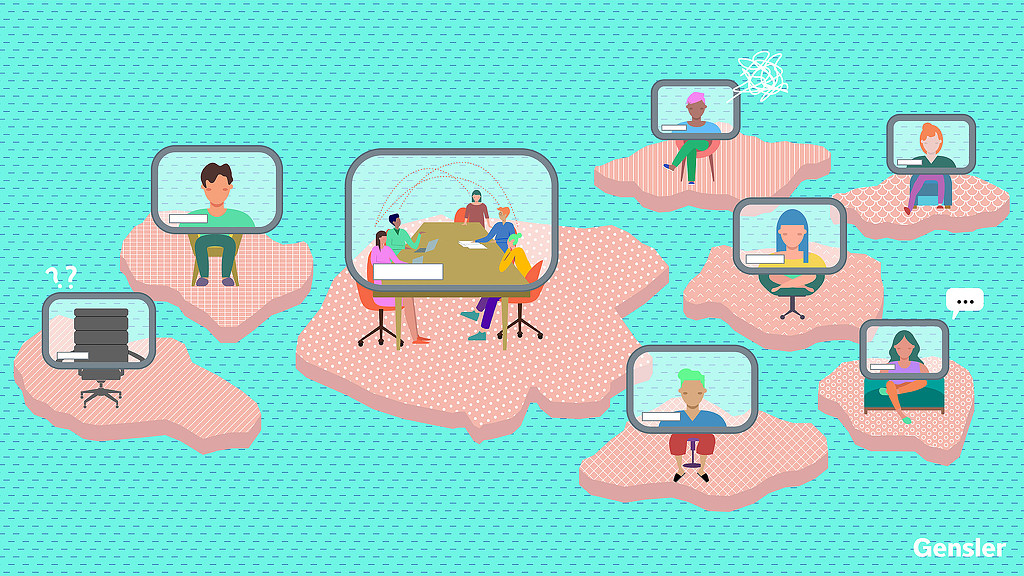11 Considerations for Making Hybrid Meetings More Effective
November 03, 2020 | By Nayan Parekh, Priscilla Teh
Recently, several of our colleagues went into the office so that our team could come together to dial into a client meeting. Five of us were physically present in the meeting room, two dialed in from home, and the five attendees from the client side dialed in individually. We were in the midst of the quintessential hybrid meeting of the future — part digital, part virtual. And it was awful.
For the people in the room who were all on one screen, individual names were not displayed, so if the client wanted to address one of us in the room, there was no reference point except the early introductions.
One of our colleagues needed to leave early, so instead of the discreet disappearance of the one person off the digital screen, there was a persistently empty chair on display throughout the meeting as a conspicuous reminder of his having left the virtual meeting early.
While the in-room banter in the 10-minute breaks between the three 30-minute segments broke the ice considerably among the people in the room, the camaraderie was completely lost on those who were dialing in individually.
At the same time, body language cues (nods of agreement etc.) from the meeting room were often missed by people on their individual digital screens, whereas those of us who were in the room could see what they agreed with or not much more effectively.
When it comes to hybrid meetings, certain new etiquette is essential.
Here are 11 considerations for making hybrid meetings more effective, based on experiments that we are currently doing with some of our clients:
1. “Hi, I am…”- Introduce yourself / make your presence known / announce your entry.
- Be conscious of the fact that not everyone is visibly present.
- Turn on your camera when speaking.
- Stick to the schedule, and encourage punctuality.
- Respect everyone’s time, both online and offline.
- It’s a lot easier to be multi-tasking behind the screen; in-person meetings force participants to focus.
- Meetings must have agendas, especially to involve people who are not physically present.
- Having discussion topics and outcomes outlined keep attendees engaged/focused.
- There is a tendency to either look to the second monitor or to the laptop instead of the meeting room camera, but video conferencing attendees should be increasingly mindful of engaging with the camera for the audience to feel like they’re being talked to.
- Traditional norms of professionalism are being questioned in the shift to hybrid work. Which formal and informal norms should be perpetuated, and which should not?
- The struggles of not being able to read body language and facial expressions clearly in real time result in many instances of talking over one another.
- For larger virtual meetings, determine a chat box or “hands-up” rule and designate a moderator.
- Check your camera and microphone settings before the meeting begins to test the camera, microphones, and other technology.
- When not speaking, it’s best to mute yourself to prevent any noise/echoes that will distract the speaker and also to avoid accidental conversations being overhead.
- “Can you hear me now?” “Can you view my screen?” has become one of the most commonly used phrases. Practice patience and empathy.
- With varying connectivity strengths and limitations of digital real estate, there will be delays and presentations may not go 100% smoothly. Take this in stride.
- Video conferencing is not the answer to everything. Explore other formats to find the best meeting set-up, depending on who is participating.
With the advent of new collaboration technologies, we could be looking into a future where digital twins, in the form of holograms and avatars, become part of hybrid meetings. But until then, let’s all do our part to make hybrid meetings more effective with the tools we have.
For media inquiries, email .


